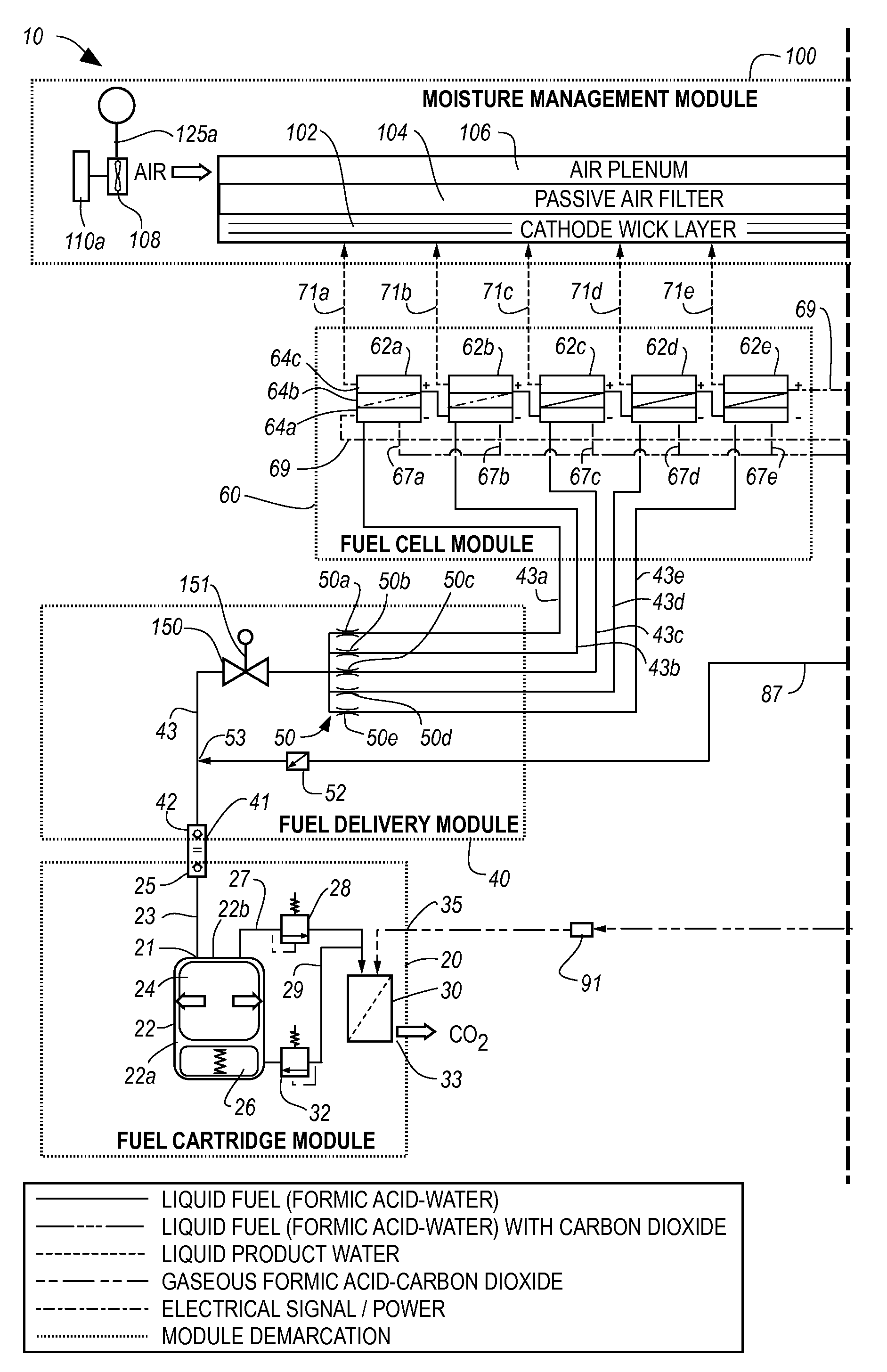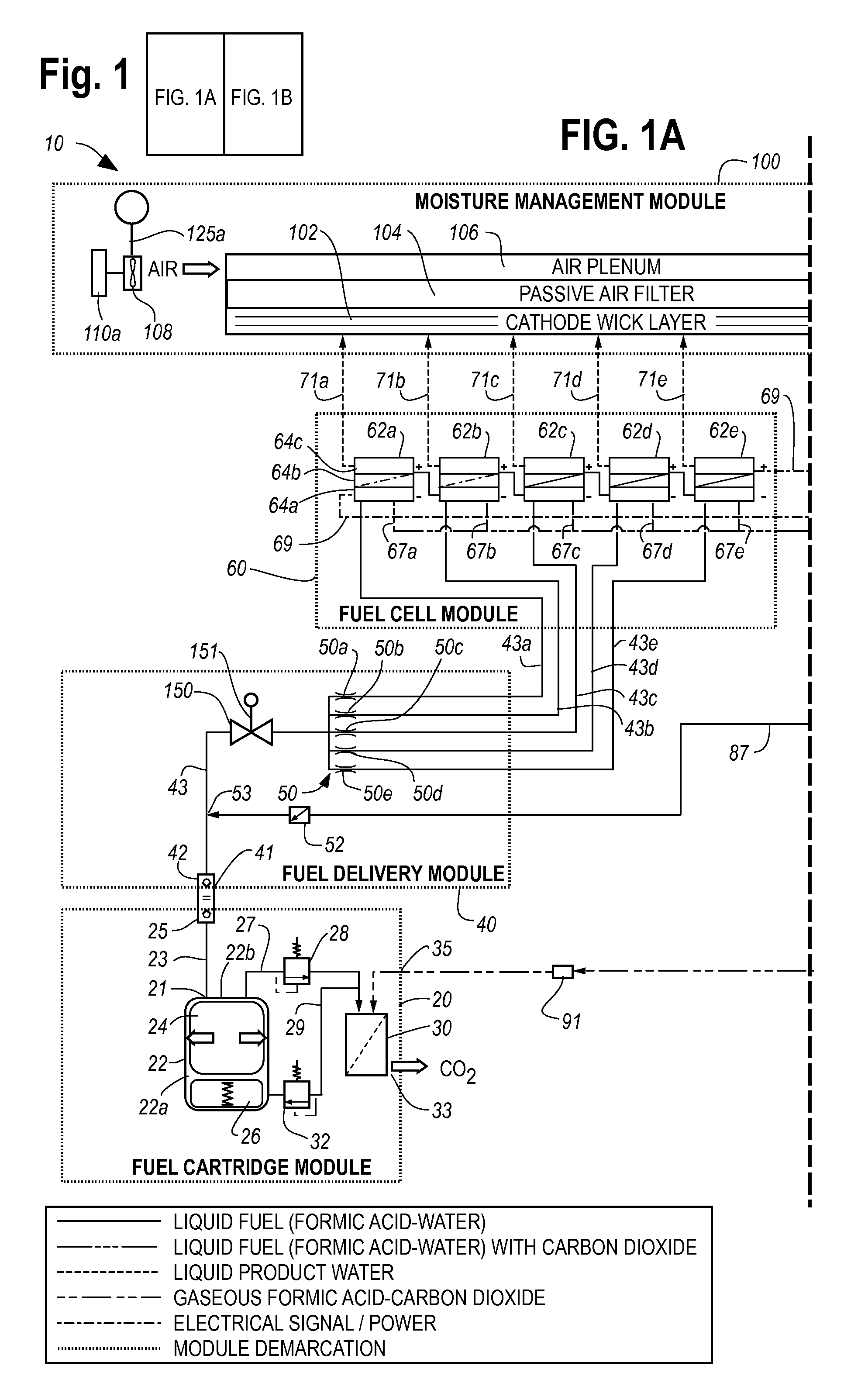Passive-pumping liquid feed fuel cell system
a fuel cell and passive pumping technology, which is applied in the direction of fuel cells, fuel cell auxilaries, electrochemical generators, etc., can solve the problems of limiting the stored energy density of the fuel to be fed, and affecting the flow of fuel positive,
- Summary
- Abstract
- Description
- Claims
- Application Information
AI Technical Summary
Benefits of technology
Problems solved by technology
Method used
Image
Examples
Embodiment Construction
)
[0044] A solution is provided to at least some of the problems previously described, by combining a passively pressurized fuel cartridge having a fuel management port interface with a fuel cell system with closed fuel circulation, the combination managing the resulting unused fuel and vapor byproducts during fuel cell operation. Such a system is particularly advantageous with aqueous formic acid fuel, where the low flashpoint results in vapors at normal storage and operating temperatures, and unused fuel and by-products are unsuited for release into the user environment, particularly for handheld mobile device applications.
[0045] Turning to FIG. 1, an embodiment of the present electric power generation system 10, which incorporates one or more liquid feed fuel cells, is depicted schematically. System 10 includes a removable and replaceable fuel cartridge module 20 for storing, delivering and receiving a vaporizable liquid fuel such as, for example, liquid formic acid. A fuel deliv...
PUM
| Property | Measurement | Unit |
|---|---|---|
| pressure | aaaaa | aaaaa |
| pressure | aaaaa | aaaaa |
| pressure | aaaaa | aaaaa |
Abstract
Description
Claims
Application Information
 Login to View More
Login to View More - R&D
- Intellectual Property
- Life Sciences
- Materials
- Tech Scout
- Unparalleled Data Quality
- Higher Quality Content
- 60% Fewer Hallucinations
Browse by: Latest US Patents, China's latest patents, Technical Efficacy Thesaurus, Application Domain, Technology Topic, Popular Technical Reports.
© 2025 PatSnap. All rights reserved.Legal|Privacy policy|Modern Slavery Act Transparency Statement|Sitemap|About US| Contact US: help@patsnap.com



